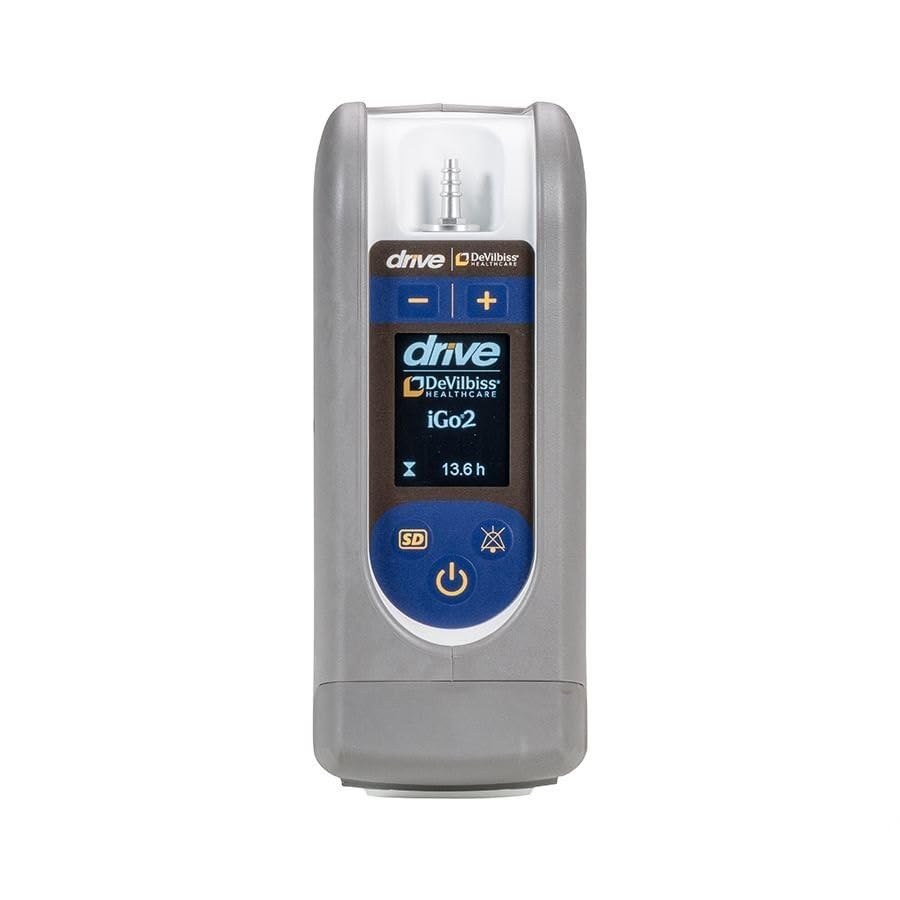Have you ever wondered that your continuous loud snoring or excessive day time sleeping may be a signal of breathing disorder known as sleep apnea? Many of us may not think about snoring as a sign of something potentially serious health condition, besides not everyone who snores is suffering from sleep apnea. Sleep apnea is as common just as diabetes and the cases of which are increasing over a time yet due to unawareness of both patient and health professionals it remains undiagnosed therefore untreated.
What is Sleep Apnea?
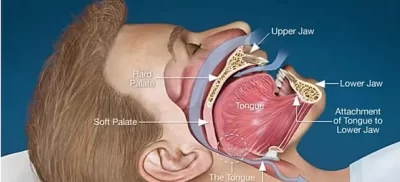
Apnea is a Greek word, it means “without breathing”. Sleep apnea is a chronic medical condition in which your breathing is disrupted during sleep, sometimes it may occur numerous times in single night. In most of times you are unaware of those breath disturbances as it doesn’t trigger a full awaking. In each event of apnea, your airway narrows as you breathe-in and breathing may be inadequate for 10 seconds or more which lowers the level of oxygen and builds up carbon dioxide in your blood. Your brain senses this impairment and rouses you partially to signal breathing to resume. Due to this, you may have extremely poor quality of sleep and end up being a day time sleeper. If not treated, it may lead to long-term health penalties including hypertension, diabetes, impotence, day to day work impairment and depression. Additionally it may be responsible for motor vehicle crashes and job impairments too.
There are chiefly three types of sleep apnea: obstructive, central and complex. Obstructive Sleep Apnea (OSA) is the most common type, characterized by blockage of the airway, it occurs when the soft tissue in the rear of the throat collapses and closes during sleep which leads to interruption in breathing. In central sleep apnea brain fails to signal the muscles to breath. While in complex type combination of above both is observed.
When to see doctor?
Some of the common symptoms of sleep apnea include snoring which is the loudest when you sleep on your back and quiets when you turn on side, witnessed stoppage of breathing or gasping of air during sleep, awaking with dry mouth, morning headache, poor quality of sleep, difficulty in paying attention while awake, and irritability. If you have any of above symptoms with other health issues, you should see the doctor.
You might be suffering from sleep apnea if you are obese, heavy smoker, alcoholic, excessive day time sleeper, suffering from hypertension or had recent stroke along with disturbed breathing during sleep.
How sleep apnea is diagnosed?
Though the cases of sleep apnea are high in the general population, only a minority of affected patients to be assessed and treated as those who remained untreated often regard their symptoms as result of poor lifestyle. Despite having significant breathing issues during sleep, most patients don’t have readily noticeable respiratory abnormality while awake. On the other hand diagnosis of sleep apnea is not based on the detection of abnormal respiratory events during sleep solely, but equally includes relevant clinical features. Thus for proper diagnosis of sleep apnea doctor may use some questionnaires (widely used such questionnaire are Berlin Questionnaire which includes questions regarding your snoring, day time sleep, tiredness, sleep while driving and blood pressure), interview witnessed partner and full polysomnography, which provides detailed information on sleep state and respiratory and gas exchange abnormalities, in addition to that it also includes body position, pulse rate and rhythmicity of heart, and muscle contraction.
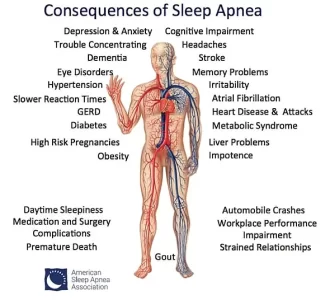
How to treat sleep apnea?
The treatment of sleep apnea is done based on symptoms of an individual. Based on the sing and symptoms you share, your doctor will classify it as minor, moderate or severe and decide treatment plan. Sleep apnea treatments start from change in lifestyle, such as losing weight, change in sleep positions, quit smoking and alcohol, to Positive Air Pressure (PAP) therapy to surgery.
PAP therapy is the most beneficial and most widely used first line therapy for treating obstructive sleep apnea, particularly in its severe form. The therapy is given by external machine called PAP machine, which works by gently blowing pressurized air through the airway at a pressure high enough to keep the throat open. This pressurized air acts as a sort of support. The pressure is set according to your need, which is kept high enough to ensure that the airway is fully open when you inhale but not so high that you are disturbed by the sensation. Note that episodes of apnea occur during sleep but not during waking hours because all muscles, including the muscles in the throat, relax during sleep. PAP therapy is usually delivered in several modes; Continues PAP (CPAP) and Bi-level PAP (BiPAP), Auto-titrating devices, Expiratory Pressure Relief (EPR), Adaptive Servo-Ventilation (ASV).
CPAP Machine
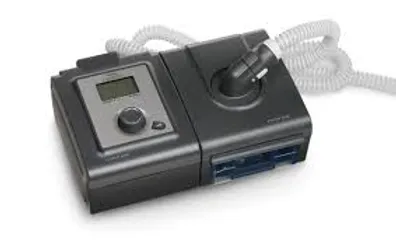
CPAP machines facilitate the airflow at a fixed rate. It can only be set to a single pressure that remains consistent throughout the night. Though, many CPAP machines now have a feature that starts off with a lower pressure setting and gradually builds to the prescribed pressure. This feature makes the pressure more tolerable and less immediate at the beginning and once the pressure builds to the essential setting; it stays at that setting for the rest of the night. Many prominent published studies including practice parameters published by American Academy of Sleep Medicine (AASM) recommend that CPAP should be considered both first-line and gold-standard treatment for OSA.
Snoring, a very common symptom represents turbulent airflow caused by upper airway narrowing. Furthermore, vibration of the carotid arteries due to snoring may increase stroke risk. CPAP machine abolishes snoring by preventing airway collapse/vibration hence improves sleep quality and reduces day time sleep. It also reduces choking and awakening at night. In addition to treating symptoms of OSA, CPAP has the strongest evidence for a beneficial cardiovascular effect including stroke, coronary artery diseases and heart failure.
Even though CPAP is established as a highly efficacious treatment for OSA, its beneficial action has been limited by poor adherence. Some patients may find it difficult to exhale against constant singular pressure supplied by CPAP device. Users often experience nasal discomfort, congestion, mask leak and feeling of being closed-in which lead to decrease compliance. The AASM parameters also recognized that numerous patients are unable to tolerate CPAP therapy, and frequently require alternate treatment. You can get CPAP on rent which helps in cutting cost.
BiPAP Machine
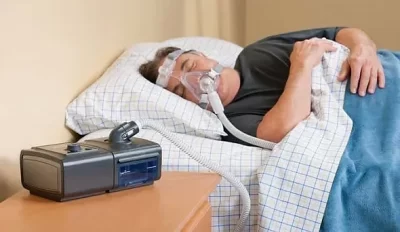
Device manufacturers have developed advances in PAP technology to improve compliance, one of which includes bi-level PAP technology. It was the first device developed to try to lower mean airway pressures due to the concern that higher pressures lead to reduced patient adherence. BiPAP delivers the airflow using variable pressure rates which are based on the user’s breathing patterns. Rather than applying a fixed pressure throughout the respiratory cycle as CPAP device does, BPAP device supplies a lower expiratory positive airway pressure for the duration of exhalation and a higher inspiratory positive airway pressure for the duration of inhalation. The device can also be set to incorporate a breath timing feature which measures the amount of breaths per minute a person should take. If the time between breaths surpasses the set limit, the machine can force the person to breath by briefly increasing the air pressure. Hence this approach can lower mean airway pressure during exhalation when the patient has to breathe out against the pressure supplied.
Nevertheless, BiPAP may be helpful in the subset of patients who complain of pressure intolerance. In addition, because BiPAP machines can generate pressures above the maximal CPAP level, BiPAP can be useful in the most severe OSA patients. Retrospective data from a population of US Military Veterans suggest that BiPAP is used more often in individuals with high Body Mass Index (BMI), heart failure, Chronic Obstructive Pulmonary Disease (COPD), hypercapnia, and severe hypoxia.
The cardinal modification in BiPAP over CPAP machines is that BiPAP machine is having two pressure sets: the prearranged pressure for inhalation called IPAP, and a lower pressure for exhalation called EPAP. This modified dual setting allows the patient to get more air in and out of their lungs. BiPAP machine on rent will help in saving money on health expenditure.
Components of CPAP & BiPAP Machine
Motor/ Airflow generator: It is a small compressor which draws in room temperature air and gently pressurizes it to deliver the absolute amount of air pressure that you need to clear the obstruction.
Filter: The air intake portion of the machine has a replaceable filter that resist particulates and impurities to come in.
Water Tank: Most new CPAP machines have small water which heats up the water to provide moisture to the air you breathe in. These humidifiers are suits the best for people living in dry or arid climates and also those who frequently wake with dry mouth, throat, or nasal cavities. CPAP motors are extremely noiseless and barely register above a whisper.
Hoses: It is the delivery device that transports the pressurized air from the motor to the wearer’s mask. While most hoses are 6 feet in length, the diameter of the hoses can be different which depends upon the machine that one uses. The hoses are heated to reduce water condensation accumulation caused by the humidifiers.
Mask: Different shapes and sizes of masks available as not every individual will feel comfortable wearing the same masks as others. There are typically four mask type variations to choose from: nasal pillows, nasal masks, nasal cradal mask and full face mask.
Nasal pillow – This is a pillow mask that will form a seal around each of your nostrils without ever coming into contact with the bridge of your nose or mouth.
Nasal mask – This one is a little small and will fit over your nose, and not the mouth. It is ideal for people who breathe with their nose while they sleep.
Nasal cradal – This will fit perfectly beneath the nose, and it delivers oxygen to your nostrils without necessarily covering the bridge of your nose.
Full mask – This will fit perfectly around your nose and mouth. It is ideal for people who love to sleep with their mouths open.
Choosing the right mask for your personal level of ease is the most important measure of PAP therapy compliance.
Conclusion
If you are having symptoms of snoring and excessive day time sleep you should visit your doctor with your bed partner, share your symptoms and ask for further intervention. As soon as the sleep apnea is confirmed with the type whether central or obstructive, plan out the best way to eliminate the symptoms with your doctor. Consider life style modification as a key of treating sleep apnea including that using PAP therapy may also provide beneficial effects in such condition. Additionally compliance to PAP therapy is also important. For that various PAP therapy machines are available with numerous variations. Select the one which suits you the best and gives you better sleep than ever once again.
REFERENCE LIST
ClevelandClinic. (2015, 06/05/2015). Do You Snore? How Sleep Apnea Can Hurt Your Heart.
Donovan, L. M., Boeder, S., Malhotra, A., & Patel, S. R. (2015). New developments in the use of positive airway pressure for obstructive sleep apnea. Journal of thoracic disease, 7(8), 1323-1342. doi:10.3978/j.issn.2072-1439.2015.07.30
Franklin, K. A., & Lindberg, E. (2015). Obstructive sleep apnea is a common disorder in the population-a review on the epidemiology of sleep apnea. Journal of thoracic disease, 7(8), 1311-1322. doi:10.3978/j.issn.2072-1439.2015.06.11
McNicholas, W. T. (2008). Diagnosis of Obstructive Sleep Apnea in Adults. Proceedings of the American Thoracic Society, 5(2), 154-160. doi:10.1513/pats.200708-118MG
MediEn. Obstructive Sleep Apnea.
Rotenberg, B. W., Murariu, D., & Pang, K. P. (2016). Trends in CPAP adherence over twenty years of data collection: a flattened curve. Journal of otolaryngology – head & neck surgery = Le Journal d’oto-rhino-laryngologie et de chirurgie cervico-faciale, 45(1), 43-43. doi:10.1186/s40463-016-0156-0
American Sleep Apnea Association, N. (2018). My Double Jaw Surgery: The Why.
Clinic, T. C. BiPAP Machine.
FleetOwner. (2016). FMCSA to hold listening sessions on sleep apnea.
Help, S. BiPAP Machine Reviews: Sleep Help.
Author Bio
Vijay Kevlani is a former junior research associate who has experience of clinical and preclinical science. He has been working as an assistant professor at department of pharmacology since 2018. He is chief author at blog spot called Pharmacology Research and Pharma Ignite. He enjoys expressing science in simple language. His educational background in pharmacology has given him a broad base for writing on issues related to health and fitness. His blog can be accessed



